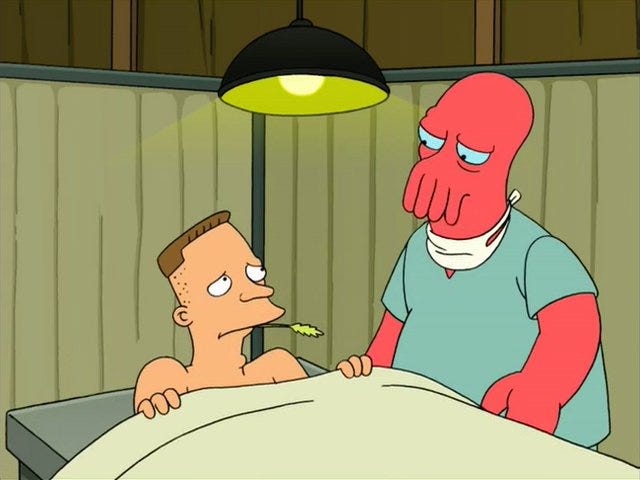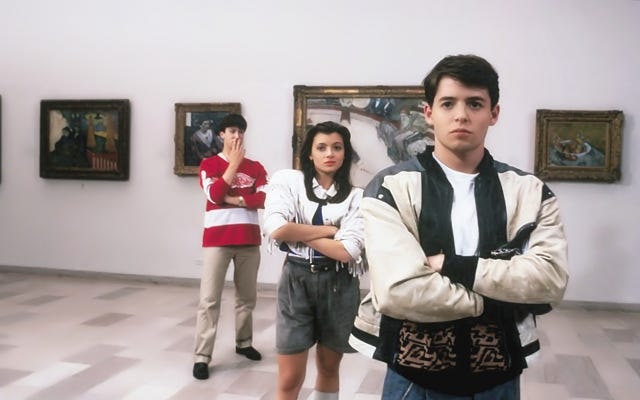So What, Who Cares (vol 3, issue 5) Why Your Next Dermatologist Will Be A Robot
Hello!
Let's try kicking off the weekend with this newsletter, ja?

One of the priorities of former Interior Dept. secretary Sally Jewell was to increase more youth and more minority population participation in our national parks infrastructure, and one of the Park Service employees who has been doing that for decades is ranger Shelton Johnson (at left), who has decided his career to educating people in Yosemite about the Buffalo Soldiers who guarded the first national parks.
If you didn't know about the Buffalo Soldiers' association with "America's Best Idea," a quick backgrounder: The segregated black regiment was led by Charles Young (born a slave in Kentucky, the third black man to graduate from West Point, and the first black superintendent of a national park). The Buffalo Soldiers defended what would become Yosemite, Sequoia and Kings Canyon National Parks from poachers and timber thieves. They preserved the land for future generations even before the National Park Service was even founded.
Johnson is dedicated to reminding us of that history -- of reminding us that the national parks belong to every constituency in America, and it takes every constituency to preserve that legacy for future generations of Americans.
*

White-collar medical workers, automation is coming for you. An AI at Stanford was recently trained to correctly identify deadly skin lesions -- the type of skill that dermatologists often use to make a living. It's not the first medical AI to correctly read medical imagery and make a correct diagnosis: PathAI in Boston can detect metastatic breast cancer by looking at lymph note pathology slide images and IBM's Watson can correctly read CT scans for blood clots and monitor heart wall motions in EKGs.
Medical fields that rely on reading images for diagnostic purposes -- radiology, cardiology, dermatology, pathology -- are about to get hit by technology that can promise to scan, process and analyze assorted data with the accuracy of a trained human professional, but at a much greater volume. This is part of a larger trend: in 2013, an Oxford study found that fully half of all jobs are "potentially automatable." We're already familiar with the hardware that has automated some jobs out of existence, and we're already familiar with the software that led to the collapse of the so-called "middle-skill" office job market. Now we're looking at AI that can take on some specialized information-analysis tasks.

So what? The emerging model for human-automation work is this: Automation is great for jobs where constant repetition and consistent quality are the top priorities, and human labor is great for complex, detail-oriented work where the outcome is also dependent on human judgment calls in varied contexts.
Who cares? People whose jobs are currently dependent on mastering and applying specific data in fairly routinized circumstances. That's the kind of work where routine (i.e. repetition) can be easily replicated by a software suite that handles every step.
*
Your pop culture recommendation of the day: I had to test-drive nine different shades of white before finding the perfect one for our walls, so clearly the subject of white walls is near and dear to my heart. Last year, I nodded along to Grace Bonney's essay on the meaning of white walls in decor blogs.
( Those walls may be a sign of shifting financial realities -- a third of Americans under age 35 own their homes, which is a much lower percentage than the 66% of the general adult population that owns, so white walls are renter reality.)

This year, I found a really riveting read in Artsy's "How the White Cube Came to Dominate the Art World." It is both a history of museum trends and an examination of how the setting of an artwork can influence how we perceive the art itself. Museum curators put a lot of thought into how their physical space can enhance the items in their collections, and this piece is a humbling reminder how many people balance a fierce love of aesthetics with a fierce sense of purpose in helping others fall in love with art too.
It is no wonder that "curation" took off through the decor blogosphere like Captain Trips -- who wouldn't be entranced by the idea that we could adopt the thoughtful, knowledgeable approach of museum professionals and turn our lives into ongoing works of art?
*
All right! Footer time! If you liked this newsletter, please pass it along to your pals. They can then subscribe here! You can leave me comments and pointers via Twitter (@lschmeiser). And thank you, always, for reading.

